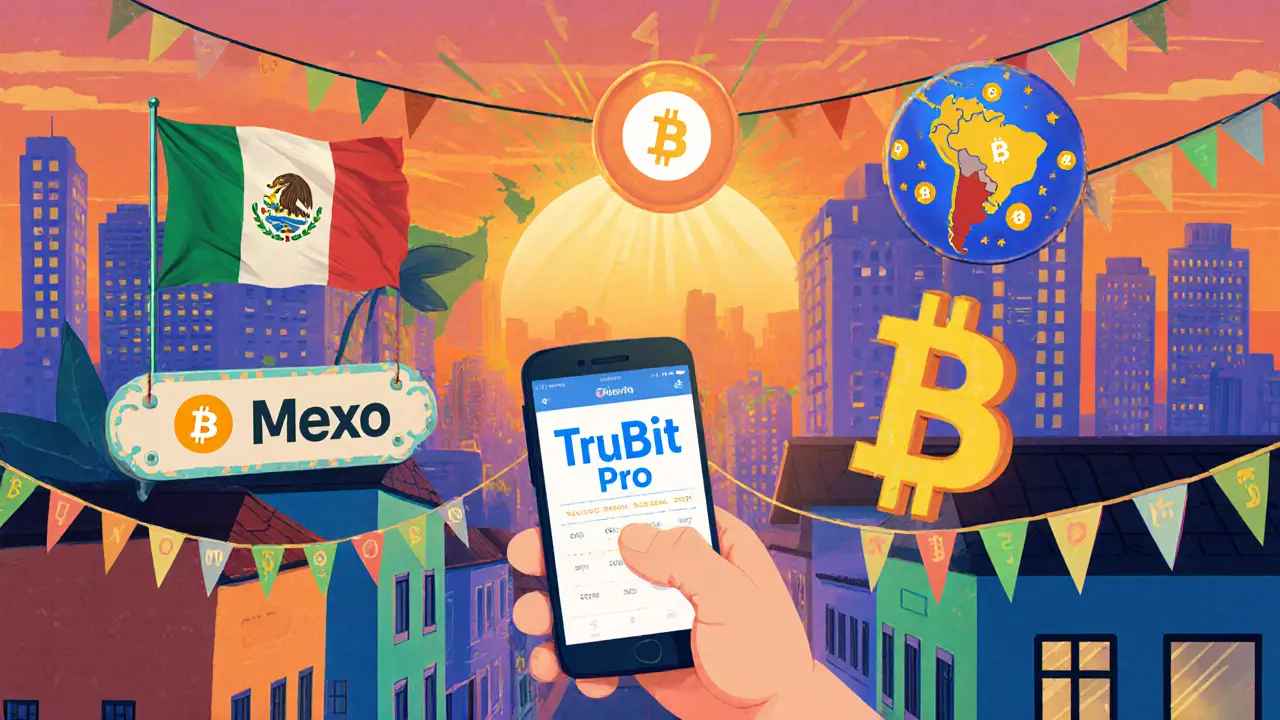Latin America Crypto Landscape: Regulations, Exchanges & Opportunities
When exploring Latin America, the region that includes Mexico, Brazil, Argentina and many Caribbean nations, known for its dynamic economies and fast‑growing digital finance scene, LATAM, you quickly encounter three core pillars that shape the market. The first is cryptocurrency regulation, government policies that determine how digital assets can be used, taxed and traded. The second pillar is decentralized exchanges, peer‑to‑peer platforms that let users swap tokens without a central broker. The third pillar is blockchain adoption, the rollout of distributed‑ledger technology in sectors such as remittances, energy and public services. Understanding how these pieces fit together helps anyone looking to trade, invest or build in the region.
Regulatory Landscape Across the Region
Latin America encompasses a patchwork of rules that can change a project’s odds overnight. Brazil’s central bank recently issued a sandbox for crypto‑asset service providers, giving firms a clear path to licensing if they meet capital and AML standards. Mexico’s fintech law treats stablecoins as payment instruments, which forces exchanges to register as financial entities. Argentina, battling high inflation, has seen a surge in crypto usage, prompting the government to propose tax guidelines that treat crypto gains like foreign currency. Colombia, meanwhile, offers a relatively friendly stance, allowing crypto businesses to operate under a light‑touch regime as long as they report transactions to the tax authority. These examples illustrate the semantic triple: Latin America includes diverse cryptocurrency regulation that directly influences the growth of decentralized exchanges and the speed of blockchain adoption in each country.
For developers, the key is to align tokenomics with local compliance. In Brazil, projects often embed KYC checkpoints at the smart‑contract level to satisfy the sandbox’s data‑privacy clause. Mexican platforms add real‑time reporting APIs to feed transaction data to the national fintech regulator. Argentine startups tend to price their tokens in US‑dollar equivalents to dodge devaluation risks. By tailoring these attributes—licensing type, reporting frequency, tax treatment—businesses can unlock market entry without hitting legal roadblocks.
Decentralized Exchanges and P2P Platforms on the Rise
Peer‑to‑peer trading thrives where banking gaps exist, and Latin America provides both. Binance P2P, LocalBitcoins, and regional players like Bitso’s P2P desk dominate the space, offering low‑fee swaps that settle in local fiat. These platforms benefit from the region’s high mobile penetration; many users complete a trade on a phone within minutes, bypassing traditional banks altogether. The underlying technology—smart contracts that escrow crypto while fiat moves off‑chain—mirrors the same architecture used by global DEXs such as Uniswap, but with added layers for compliance, like built‑in AML screening. As regulators tighten, we see a shift toward hybrid models that blend on‑chain liquidity with off‑chain fiat gateways, ensuring that users stay within the legal perimeter while still enjoying the speed of decentralized trading.
Data from 2024‑2025 shows monthly P2P volume growing at double‑digit rates in Mexico and Brazil, driven by remittance flows and a younger demographic eager for alternative savings. This growth fuels ancillary services—crypto wallets, fiat on‑ramps, and educational bots—that round out the ecosystem and create new revenue streams for local fintechs.
Blockchain Adoption Beyond Trading
While trading captures headlines, real impact happens when blockchain integrates with everyday sectors. In the energy market, pilots in Chile and Brazil test peer‑to‑peer power trading, letting households sell excess solar output directly to neighbors via tokenized contracts. Remittance corridors between the U.S. and Mexico are being re‑engineered with stablecoin bridges that cut fees from 7‑10% down to under 1%. Governments in Costa Rica and Uruguay are experimenting with blockchain‑based land registries, improving transparency and reducing fraud. Each of these use cases ties back to the three core entities: they rely on clear cryptocurrency regulation to secure legal standing, they use decentralized exchanges or liquidity pools to move assets quickly, and they showcase the broader potential of blockchain adoption across public services.
For investors, these trends signal diversified entry points. Tokenized energy credits, stablecoin remittance corridors, and land‑registry NFTs each present distinct risk‑reward profiles. By monitoring regulatory updates, you can gauge which projects are likely to receive official backing and which might face hurdles.
Airdrops and Token Opportunities Tailored to LATAM
Projects looking to tap the LATAM market often launch airdrops that reward local wallets. Recent examples include the Zamio TrillioHeirs NFT giveaway and the GoMining token distribution, both of which required participants to hold a minimal amount of native tokens on a Binance P2P account. These campaigns serve a dual purpose: they create buzz and help projects meet regional KYC thresholds by linking wallet addresses to verified fiat identities. While airdrops can be lucrative, the greatest value comes from the exposure to emerging ecosystems—once you hold the token, you can join governance votes, earn staking rewards, and stay ahead of upcoming protocol upgrades.
When evaluating an airdrop, check three attributes: the legitimacy of the issuing team, the clarity of the tokenomics, and the compliance steps required for your jurisdiction. Following these guidelines can turn a simple free token into a foothold for deeper participation in the LATAM crypto landscape.
Below you’ll find a curated collection of articles that dive deeper into each of these areas—regulatory breakdowns, DEX reviews, blockchain use‑case studies, and step‑by‑step airdrop guides—so you can turn this overview into actionable insight.
TruBit Pro Exchange Review: Features, Fees, and Safety for 2025
Posted By Tristan Valehart On 21 Oct 2025 Comments (29)

A detailed TruBit Pro Exchange review covering history, features, fees, security, user experience, and a side‑by‑side comparison with top rivals.
READ MORE
